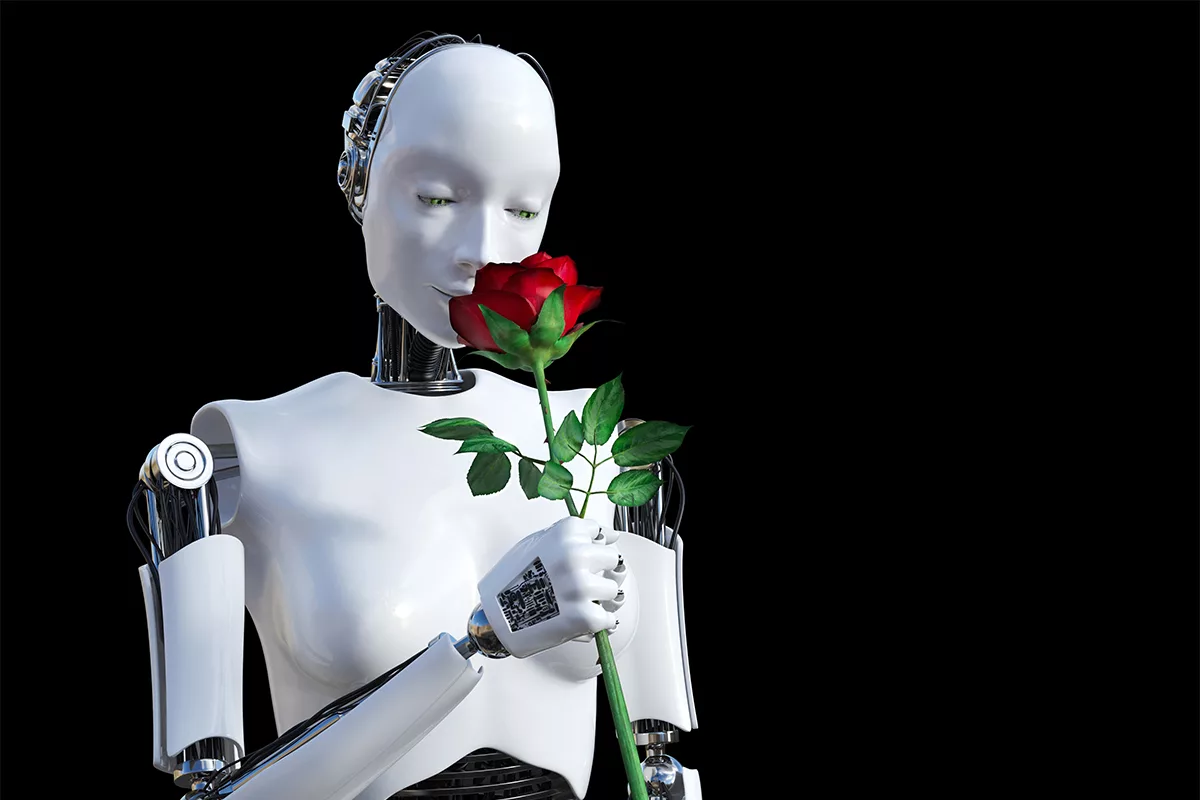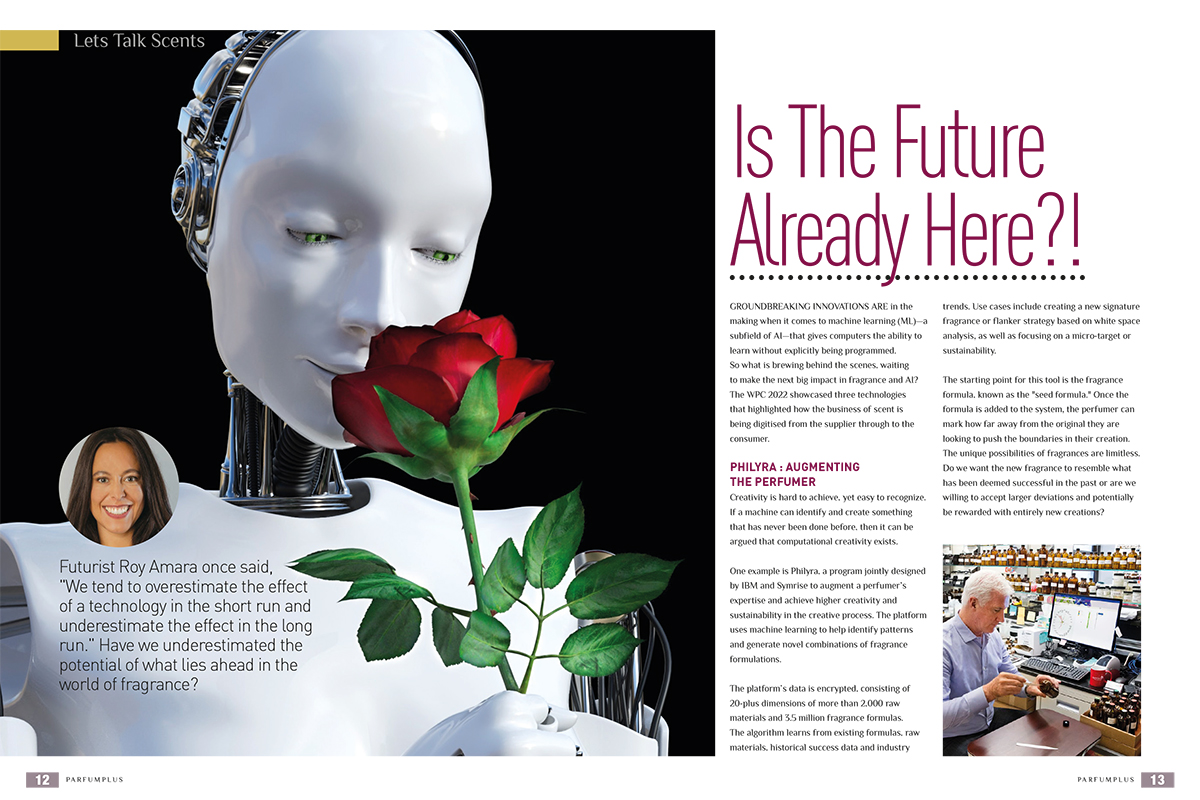Read this post in
 Arabic
Arabic

Is The Future Already Here?!
Futurist Roy Amara once said, "We tend to overestimate the effect of a technology in the short run and underestimate the effect in the long run." Have we underestimated the potential of what lies ahead in the world of fragrance?
Groundbreaking innovations are in the making when it comes to machine learning (ML)—a subfield of AI—that gives computers the ability to learn without explicitly being programmed.
So what is brewing behind the scenes, waiting to make the next big impact in fragrance and AI? The WPC 2022 showcased three technologies that highlighted how the business of scent is being digitised from the supplier through to the consumer.
Philyra : Augmenting the Perfumer
Creativity is hard to achieve, yet easy to recognize. If a machine can identify and create something that has never been done before, then it can be argued that computational creativity exists.
One example is Philyra, a program jointly designed by IBM and Symrise to augment a perfumer’s expertise and achieve higher creativity and sustainability in the creative process. The platform uses machine learning to help identify patterns and generate novel combinations of fragrance formulations.
The platform’s data is encrypted, consisting of 20-plus dimensions of more than 2,000 raw materials and 3.5 million fragrance formulas. The algorithm learns from existing formulas, raw materials, historical success data and industry.
trends. Use cases include creating a new signature fragrance or flanker strategy based on white space analysis, as well as focusing on a micro-target or sustainability.
The starting point for this tool is the fragrance formula, known as the "seed formula." Once the formula is added to the system, the perfumer can mark how far away from the original they are looking to push the boundaries in their creation. The unique possibilities of fragrances are limitless. Do we want the new fragrance to resemble what has been deemed successful in the past or are we willing to accept larger deviations and potentially be rewarded with entirely new creations?
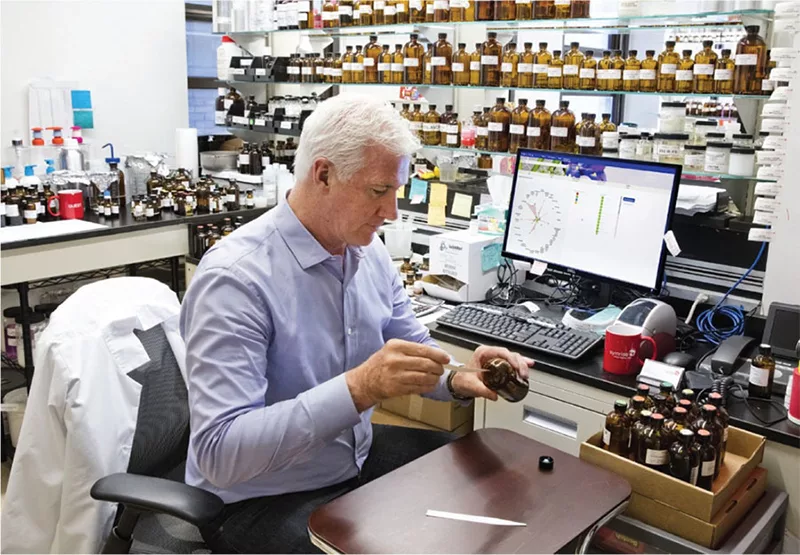
Phylria can suggest alternative materials, considering dosing for each ingredient based on usage patterns, pleasantness and novelty of the fragrance by comparing it to a large set of commercially available fragrances. The technology also takes into consideration the technical qualities of raw material, including the molecular bloom, weight, vapour pressure and threshold of human perception.
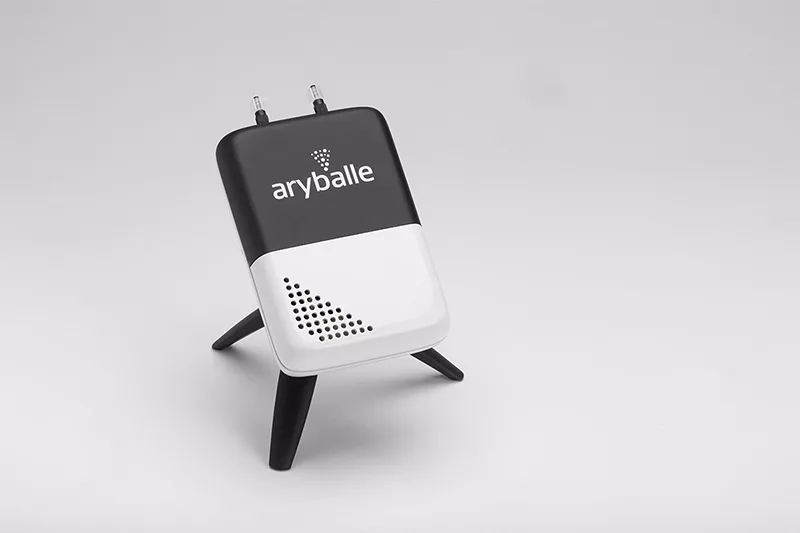
For a creative exploration, a perfumer can analyse the output formulas and choose a selection of them to be compounded in order to smell them. The operating perfumer can also direct the Phylria platform to generate new combinations of fragrance formulations that fit specific design objectives—for example, creating a unique fragrance for teenagers in the Middle East.
AI-driven Regulatory & Sustainability Compliance
In addition to pushing the creative boundaries, Phylria algorithm also suggests ingredient substitutes for formulas to comply with new safety and regulatory standards. It can, for instance,
substitute in more sustainable materials with higher biodegradability and renewability scores, all while keeping a similar olfactory profile. This offers unparalleled opportunity to design fragrances to be more environmentally conscious, potentially offering significant cost savings and increasing consumer demand.
Aryballe : An Olfactory Compass
Aryballe is building a digital library of odours. With one sniff, the company’s sensor technology can identify an odour or fragrance not just based on single compounds but based on the way our nose detects scents through our receptors.
It then situates this odour or odour composition on a digital odour map in relation to other fragrances or odours. One can zoom in to see similar odours and zoom out to view clusters of different odour groups.
"Imagine you are using your GPS, it knows where you are on a continent, in a city and will help you navigate the space. Here, there are different continents, the vanilla continent, and the fruity continent for example.", explains the company spokesperson.
The technology can be a compass. As a perfumer’s tool, it can eliminate the step of a perfumer inputting a formula. It also allows them to work with more formula candidates and visualise the odour profile before executing a new fragrance, thereby greatly reducing time and cost associated with fragrance creation.
Kaorium : Translating Scent into Words
In a retail setting there still has not been much innovation beyond transferring an online quiz onto an in-store touch display or creating a blind smelling experience in which consumers can smell fragrances without knowing which brand or fragrance they are currently smelling—thereby eliminating visual and brand biases. This is where Kaorium enters the stage.
Kaorium is a digital table system with perfume bottles displayed in a semicircle on top.
The system enables a poetic interactive experience that invites consumers to smell, reflect and experience, building a new relationship to fragrances in a retail setting. "People are not ready to choose in [the] current buying experience. We are here to help solve this problem.", is how the company likes to explain the process.
Here’s a breakdown of the Kaorium process
Step 1: The consumer selects their preferred fragrance from a selection of unmarked bottles and places it on a digitally connected coaster.
Step 2: Various words that express the fragrance (such as "romantic" and "warm") float onto the table display. The consumer selects the word that to them best represents the fragrance that they just picked.
Step 3: The display then illuminates a selection of fragrances and asks the consumer to smell these and choose the one that best matches the previously selected word.
By repeating this process of consciously smelling fragrances, reflecting and connecting them to words, the system derives a pattern of the consumer's individual perception and builds a database of word-scent associations.
The final output is an AI-generated poetic phrase that brings to life a sensory scene based on three fragrances and words selected in the discovery process. The names of the fragrances are only then revealed.
This AI-enabled consumer experience bridges the sensorial and rational mind "It invites consumers to smell, removing memories and biases, and allows them to take a moment to learn about their fragrance preferences." Such a process that requires presence and focus enables consumers to form a new relationship to fragrances.
By using Kaorium’s latest version, which can fit on a makeup counter, retailers can increase in-store engagement, education and improve sales while gaining new insight about consumers’ preferences. Learning how to smell fragrances without visual influences and how to express preferences in a world where at least 14 new fragrances are launched every single day holds more potential than we can currently foresee.
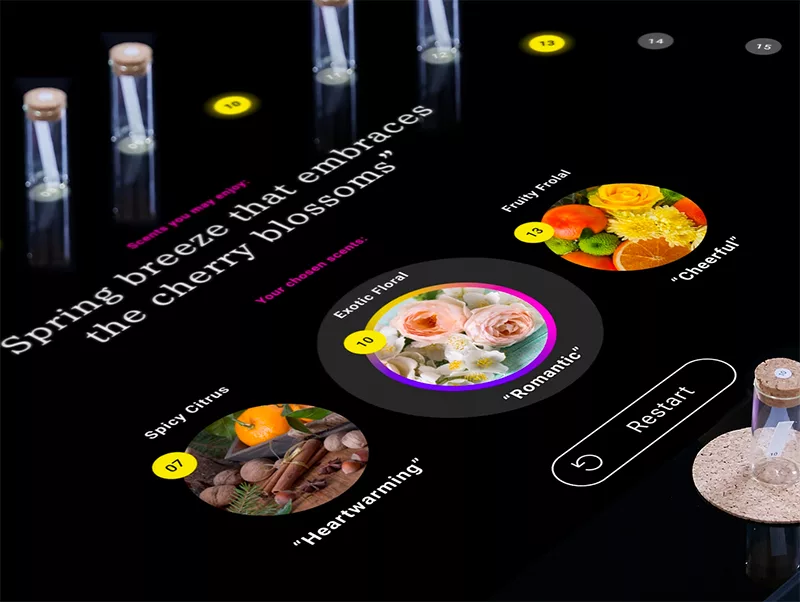
The World Ahead
The future of smell will involve the synthesis of expert knowledge, data-driven scent development and an increase in consumers’ sensory awareness, even when the scent of this composition is yet to reach our perceptual threshold. So if you want to know "What is the future of AI assisted fragrance design?" the simple answer is "Everything."
Read this post in
 Arabic
Arabic


